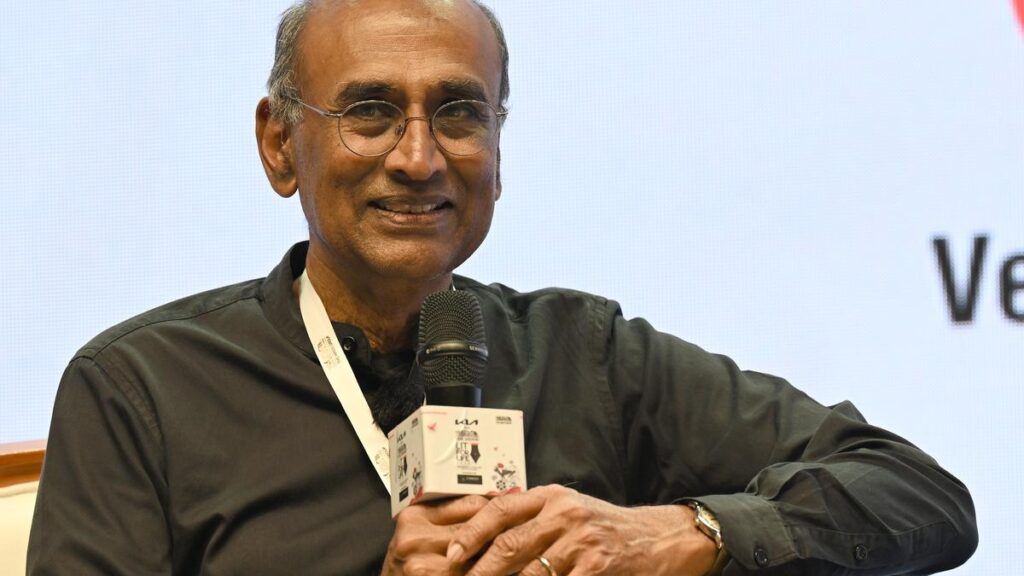
India, despite its vast talent pool and growing stature, remains a less appealing destination for top-tier international researchers. Nobel Laureate Venkatraman “Venki” Ramakrishnan—winner of the 2009 Nobel Prize in Chemistry—has been candid in pointing out fundamental shortcomings that discourage global scientific talent from relishing long-term careers in India.
🚩 Chronic Underfunding & Low R&D Investment
Ramakrishnan highlights that India’s public spending on research and development hovers around just 0.7% of GDP—far behind nations like China, South Korea, or Israel, which invest 2–4% or more . This chronic under-investment hampers the nation’s capacity to launch and sustain world-class scientific programs.
He emphasizes that this budget gap is a major barrier to fostering a culture of innovation, as ideals expressed in India’s Constitution are not matched by actual funding allocation .
🏗️ Infrastructure Deficit in Universities & Research Centers
Ramakrishnan notes substantial infrastructure disparities—while elite institutions like IISERs, IISc, and IITs may offer state-of-the-art facilities, most state universities suffer from outdated labs, poor equipment, and minimal research support qz.com. Senior researchers find it hard to mentor and publish significant work under these conditions.
Echoing this, he observes there’s insufficient infrastructure to accommodate visiting scholars, including Nobel laureates, particularly in regions beyond major metropolitan hubs like Beijing or Shanghai .
⚙️ Bureaucratic Bottlenecks & Political Interference
Another significant headache is bureaucratic red tape. Approval delays and rigid regulations often frustrate scientists eager to conduct time-sensitive research .
Ramakrishnan strongly advocates for scientific autonomy and warns against political meddling in research agendas, citing historical examples from Nazi Germany and Stalinist Russia where politicization wrecked scientific progress .
💼 Inadequate Income & Career Incentives
Attractive remuneration packages are essential to draw senior foreign scientists. Unfortunately, India lags in matching global competitive salaries. Ramakrishnan insists that proper compensation, comfortable living conditions, and a supportive quality of life are vital to making India a research destination of choice.
👥 Weak Bridge Between Education & Research
Indian universities often segregate teaching from research. While research thrives in select central institutes, undergraduates at state universities are largely cut off from cutting-edge science .
To address this, Ramakrishnan praises initiatives like the IISERs that blend rigorous undergraduate teaching with active research environments. But he also stresses that far more such centers are required nationwide
🛠️ Solutions: Vision, Investment & Governance
Ramakrishnan lays out a path forward, stressing:
- Stable multi-decade funding: Move beyond election-year cycles with sustained commitment to science .
- Insulate science from politics: Allow expert-led panels to set research agendas free from ideological influence .
- Enhance infrastructure systematically: Equip state universities and local research centers with modern labs and facilities .
- Attract global talent with incentives: Offer competitive pay, fellowships, and quality living environments to international scientists .
- Encourage mentor succession & institution-building: Senior researchers must mentor and build next-generation faculty, ensuring continuity .
🤝 A Wake-Up Call for Transformation
Ramakrishnan’s critique resonates widely on social media. One Reddit researcher asserted:
“passion ke liye bhi paise chaiye…you can’t research anything if you have to worry about food and housing”
There’s growing public awareness that scientific culture in India requires urgent reform—through financial, administrative, and cultural shifts.
🧭 The Way Forward
India’s potential as a scientific powerhouse is undeniable, but realizing it demands bold reforms. Nobel Laureate Ramakrishnan believes that with strategic funding, robust infrastructure, academic freedom, and global engagement, India can attract top foreign scientists and nurture its own homegrown talent.
The question now is whether policymakers will translate this diagnosis into action—and in doing so, transform India into a vibrant, globally competitive center for science and innovation.
📝 Summary: Key Challenges & Reforms
| Issue | Recommendation |
|---|---|
| Low R&D investment | Raise to ≥2% of GDP |
| Poor university infrastructure | Upgrade labs; support state institutions |
| Bureaucratic delays | Simplify approvals; empower scientific governance |
| Political influence | Create independent expert panels |
| Low pay & living standards | Offer global-competitive packages and campus amenities |
| Weak faculty succession | Cultivate mentoring culture and leadership |
If India can confront these issues decisively, it could transform from a scientific backwater into an innovation powerhouse—with its voice amplified and heard on the global stage.
Thanks For Reading